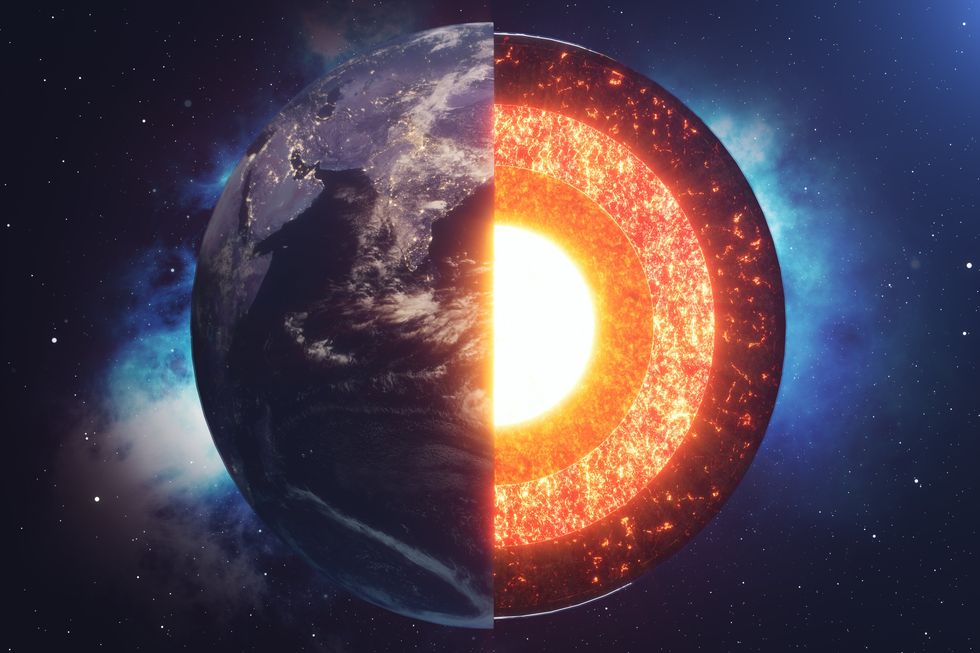Science & Tech
Jake Brigstock
Jan 27, 2025
Inside Of The Earth 'Full Of Blobs From Another Planet'
Cover Media - Shareable / VideoElephant
Scientists have discovered structures that scatter seismic waves deep inside the mantle of Planet Earth everywhere and it is leaving them baffled.
Research suggests our planet's mantle, which is the layer sandwiched between the core and crust, is filled with zones that slow down seismic waves which are caused by earthquakes.
It was already known that ultra-low velocity zones (ULVZs) are near hotspots, which are regions of mantle where hot rock moves up forming volcanic islands, but new mysterious earthquake waves suggest this might be more widespread than initially thought.
Speaking to LiveScience, Michael Thorne, a geologist and geophysicist at the University of Utah, said: "Here's one of the most extreme features that we see anywhere inside the planet and we don't know what they are, where they're coming from, what they're made of, [or] what role they play inside the Earth.
"There are a lot of open questions we don't have answers to yet."

This all came to light when researchers were working on a different study.
Scientists were looking to examine how PKP waves caused by very large earthquakes could travel through the middle of Earth to the other side of the core through the mantle, the liquid outer core, and then the mantle again.
Another strange type of wave, called precursor PKP waves, can sometimes come before PKP waves and scientists were researching features of these.
Findings from this study suggested something was dramatically slowing the earthquake waves to scatter energy.
A large ULVZ was found in the area studied by the team of scientists under the western Pacific; the team also found signs of a number ULVZs when looking elsewhere under North America, North Africa, East Asia, Papua New Guinea and the Pacific Northwest.
Thorne said this suggests they're being actively generated.
While this will likely be researched further, better understanding is reported as having the potential to improve geologists' grasp of volcanic hotspots as well as how the mantle moves.
This article was first published on September 2, 2024
How to join the indy100's free WhatsApp channel
Sign up to our free indy100 weekly newsletter
Have your say in our news democracy. Click the upvote icon at the top of the page to help raise this article through the indy100 rankings.
Top 100
The Conversation (0)













